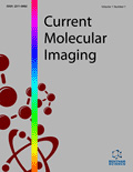Abstract
Magnetic resonance (MR) is often the modality of choice to image cancer patients. In standard-of-care clinical practice magnetic resonance imaging (MRI) is commonly used to obtain anatomical information based on physical properties of tissue water, but MR techniques are very versatile and can also be applied for functional and metabolic assessment. Metabolic aberrations are common in cancers either as a direct response to altered signal transduction, or as a consequence of increased cell proliferation, alterations in blood and substrate supply, tumor necrosis and hypoxia. Throughout the past years, magnetic resonance spectroscopy (MRS) has been utilized for the non-invasive radiological assessment of the chemical content of a distinct lesion within the body. Next to positron emission tomography (PET), MRS is defined as a metabolic imaging technique. Clinically, proton (1H-) MRS plays a dominant role, because of its high sensitivity, high abundance of the 1H nucleus in tissue metabolites and readily available clinical MR scanners, which are dedicated to observe 1H in water and fat for MRI. A typical feature in 1H-MR spectra of cancer patients is increased concentrations of total choline (tCho) which serve as a diagnostic and prognostic marker for staging and therapy response in brain, breast, prostate and ovarian cancers. Next to universally increased tCho (membrane phospholipid metabolism), abnormal levels of tissue specific metabolites have been reported for brain (decreased N-acetyl aspartate) and prostate (decreased citrate). Presently, high field MR magnets (3T and above) allow for faster acquisition and better resolution of in vivo1H-MRS in oncology. High-resolution magic angle spinning (HR-MAS) MRS has been successfully applied to small volume tumor biopsies, needle biopsies and fine-needle aspirates for fast and non-destructive ex vivo metabolic analysis. Pre-clinical development of 13C-hyperoplarized MRS in animal models (mostly with [1-13C]pyruvate as a tracer) will soon be translated into clinical 13C-MRS protocols for the assessment of glucose metabolism. This might facilitate the integration of PET and MR into a comprehensive multimodality platform for metabolic imaging in the foreseeable future.
Keywords: Nuclear magnetic resonance (NMR), in vivo magnetic resonance spectroscopy (MRS), metabolic imaging, metabolomics, magic angle spinning (MAS), hyperpolarized 13C-MRS, Oncologic Imaging, Magnetic resonance, positron emission tomography
 30
30

